If you’re looking for a unique purple succulent plant, you’ve come to the right spot! Succulents come in all shapes and colors and today I’m sharing some of the most stunning purple succulents you can buy.
Succulents are a popular choice amongst gardeners of all skillsets. Sure, they’re easy to care for, but more importantly, they’re absolutely beautiful!
One of my favorite parts about succulents is the vast variety; it seems you can find a succulent in any color you choose.
Table of Contents
30 Purple Succulent Plants
Check out this list of 30 purple succulents to find the perfect match for you.
This post includes affiliate links.
1. Sempervivum ‘Raspberry Ice’
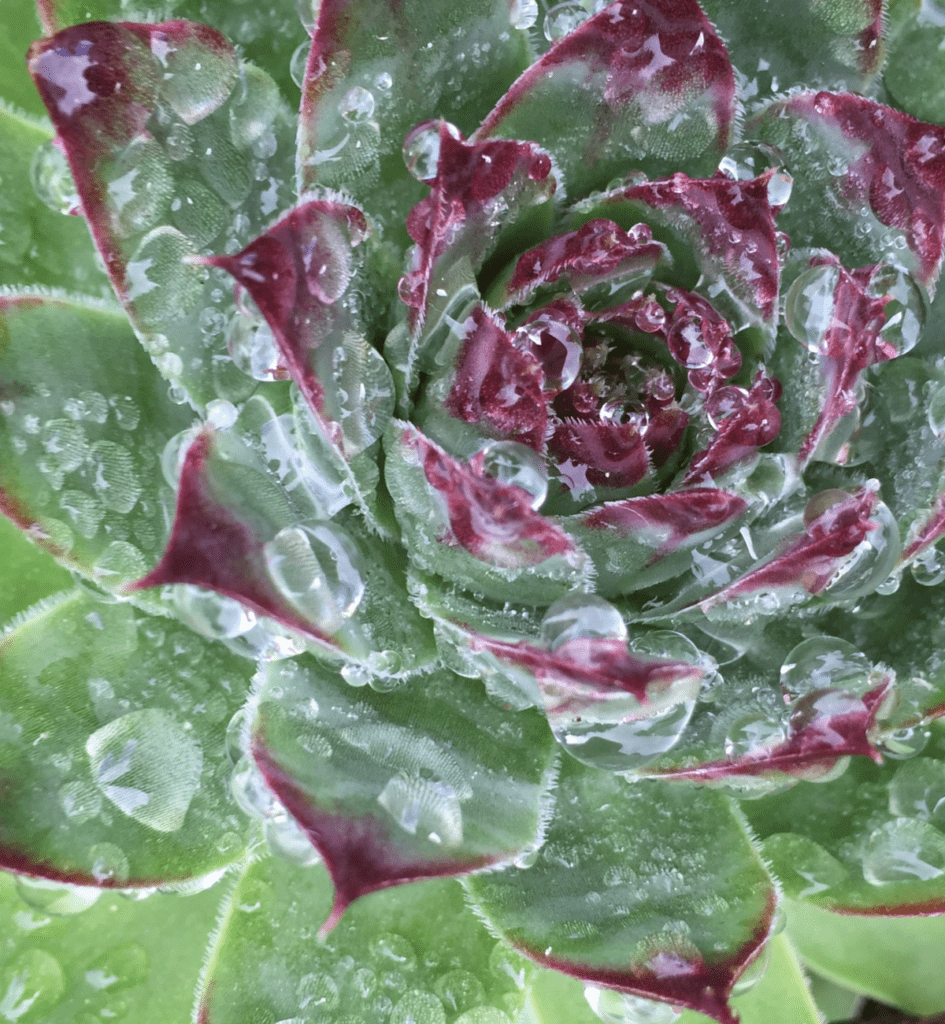
Like most other members of the Sempervivum group, the raspberry ice grows densely-packed leaves in a spiral rosette pattern. The leaves are also quite unique, as they are adorned with white cobweb-like hairs along the edges.
The raspberry ice’s leaves turn from red to purple as it ages, so don’t be disappointed if your succulent isn’t as purple as you’d like it to be!
2. Sempervivum ‘Purple Beauty’
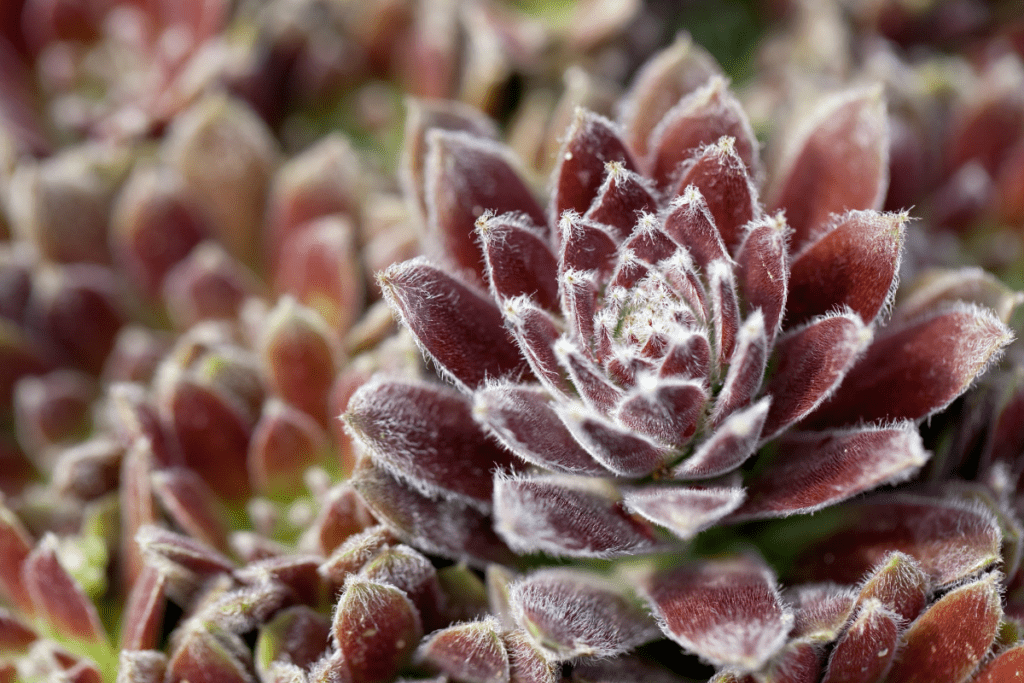
These peculiar little succulents have unique leaves which are mostly purple with green edges. Only reaching about 6 inches in diameter, the leaves of the purple beauty grows in a rose-shaped spiral pattern.
Like with many other succulents, they enjoy dry watering conditions and well-draining soil.
3. Sempervivum ‘Dark Beauty’
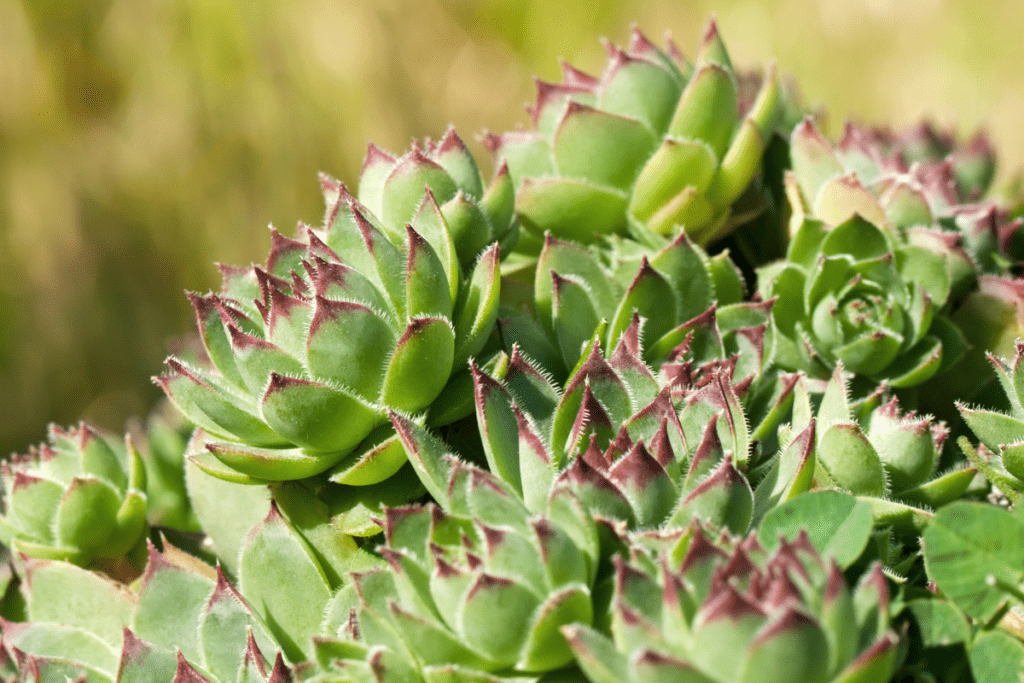
Interested in a trendy “goth garden?” Look no further than the dark beauty succulent. Named after their hue, this succulent grows small aubergine leaves that form a circular pattern.
The edges of their leaves are adorned with thin green hairs, which is striking against the deep purple hue. This variety is very tolerant of neglect- it would be hard to kill this plant.
4. Opuntia santarita / Santa Rita Prickly Pear
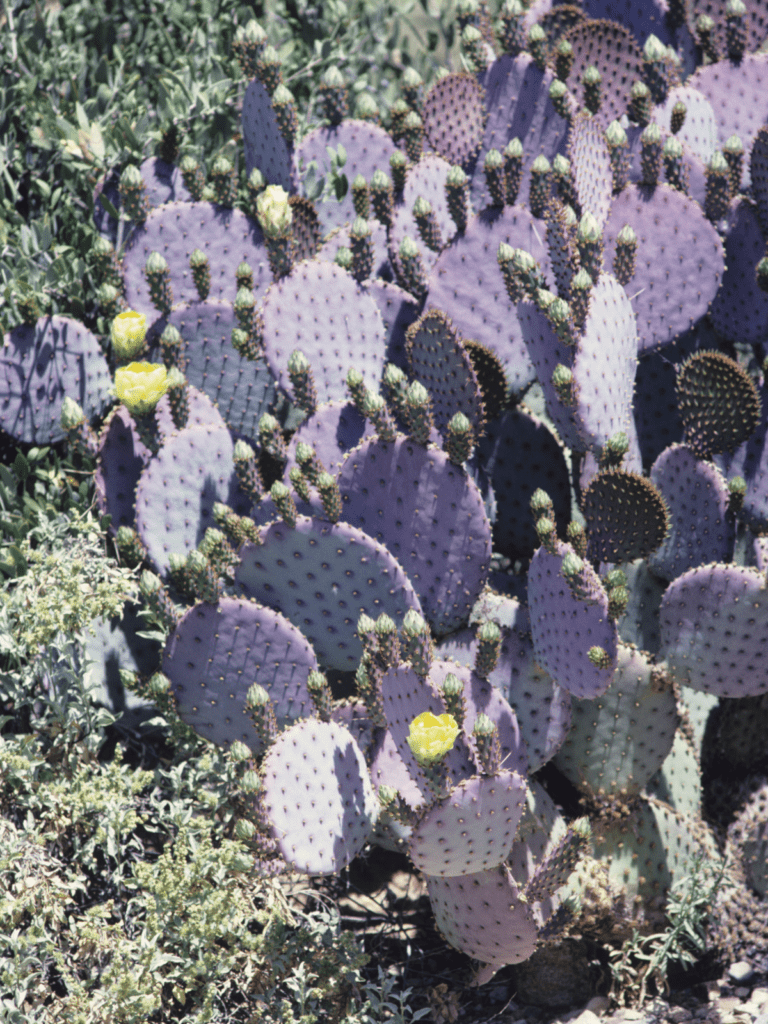
Native to the southwestern United States, the Santa Rita prickly pear is a very peculiar cactus. This succulent is perfect for an outdoor garden, reaching a height of 6 feet tall and a spread of 9 feet wide.
The cactus pads are a mix of green and purple, and during the spring, they grow beautiful yellow flowers. The Opuntia santarita also produces fruit, which is completely edible.
Plant your cactus in a location that receives full sunlight and give your plant minimal water (they are very sensitive to overwatering). Don’t worry about cold temperatures, the Santa Rita prickly pear is able to tolerate occasional bouts of frost.
5. Echeveria ‘Neon Breaker’

Possibly one of the more unique-looking members of the Echeveria group, the neon breaker gets its name from its fluorescent crinkled leaves that are adorned with colors such as purple, magenta, and even orange.
These neon hues only intensify when exposed to full sun, so make sure your plants get plenty of it.
6. Echeveria ‘Taurus’
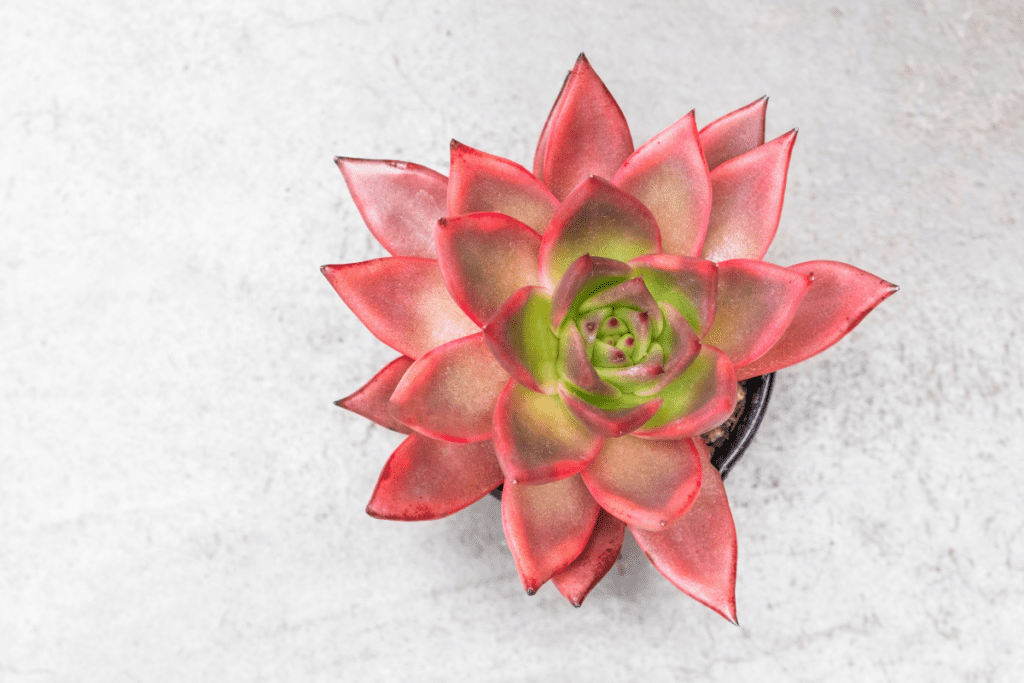
This native of Mexico produces beautiful red and yellow flowers during the summer. Like many members of the Echeveria group, the Echeveria taurus variety has fleshy, triangular leaves that are a vibrant reddish-purple.
You can even grow this succulent outdoors if you live in the right climate!
7. Echeveria ‘Cubic Frost’
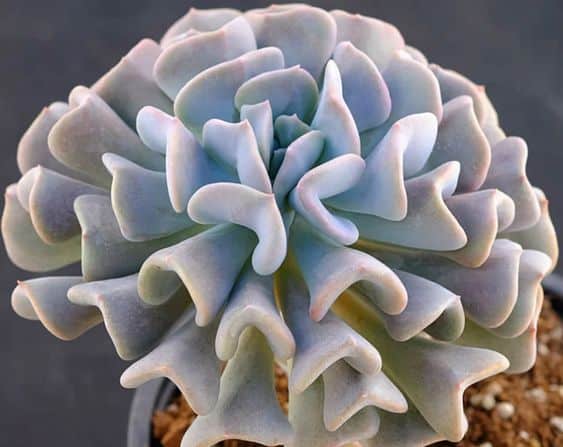
This Echeveria succulent is quite a head turner due to its fascinatingly wavy leaves. These irregular, lilac leaves grow in a rosette formation. You’ll also notice the leaves are coated in a powdery wax, which helps protect the plant from harsh sunlight in its natural habitat.
8. Echeveria ‘Purple Pearl’
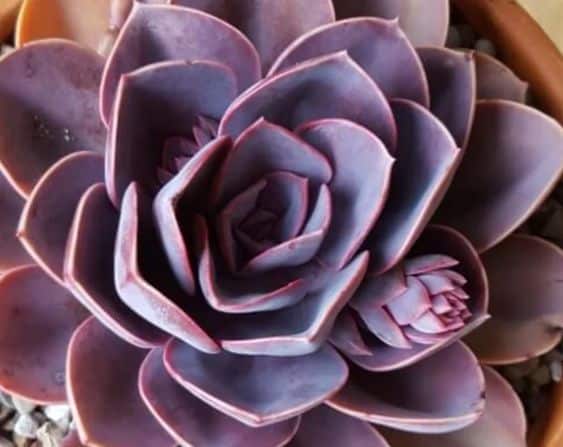
This lilac member of the Echeveria group is a beautiful plant, perfect on its own or in a succulent garden. They grow to about 8 inches in diameter and can reach a height of 6 to 8 inches tall. Caring for them is very typical of most Echeveria succulents; they like bright, indirect light and infrequent watering.
9. Echeveria ‘Black Prince’

Image via 831 Succulents
Able to be grown indoors and outdoors, the black prince variety of succulent is another excellent choice for gardeners looking to add a gothic flair to their garden.
Their spiral leaves are a mix of many deep shades, including green and dark purple. The more sun this succulent is exposed to, the darker the purple.
10. Echeveria ‘Afterglow’
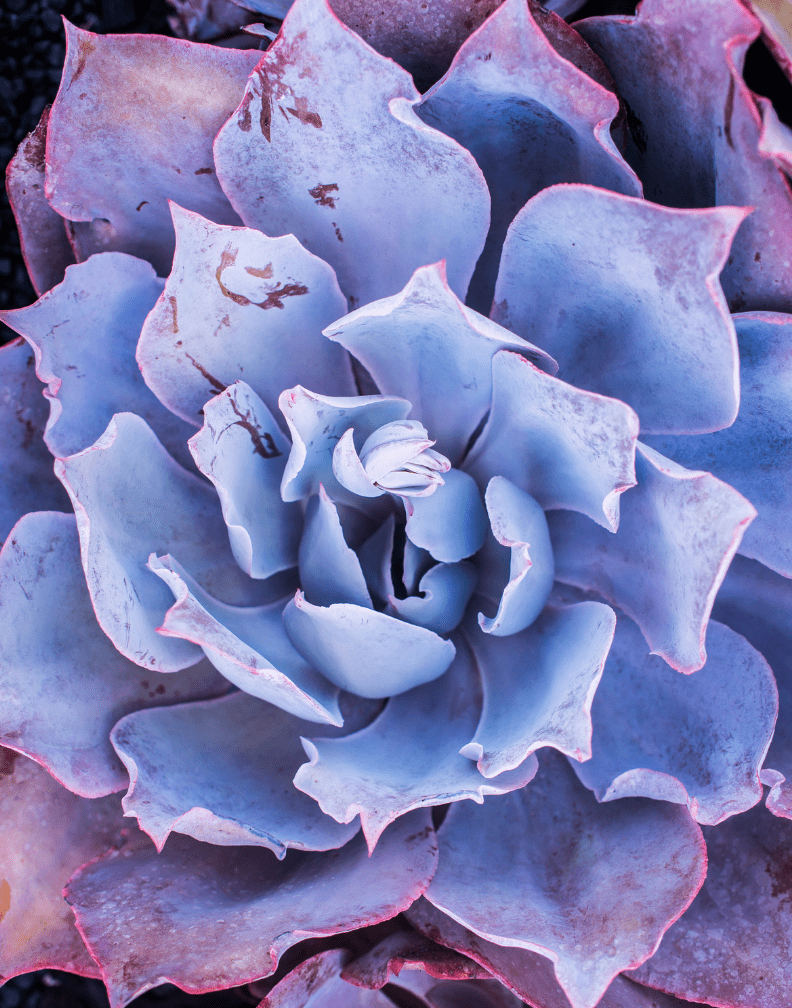
This Echeveria members is identifiable by its fleshy, lavender leaves with neon pink edges. The afterglow is one of the larger succulents on this list (reaching a spread of roughly 16 inches).
They are a low-growing succulent and the leaves grow from a short, stocky stem.
11. Echeveria ‘Perle von Nürnberg’
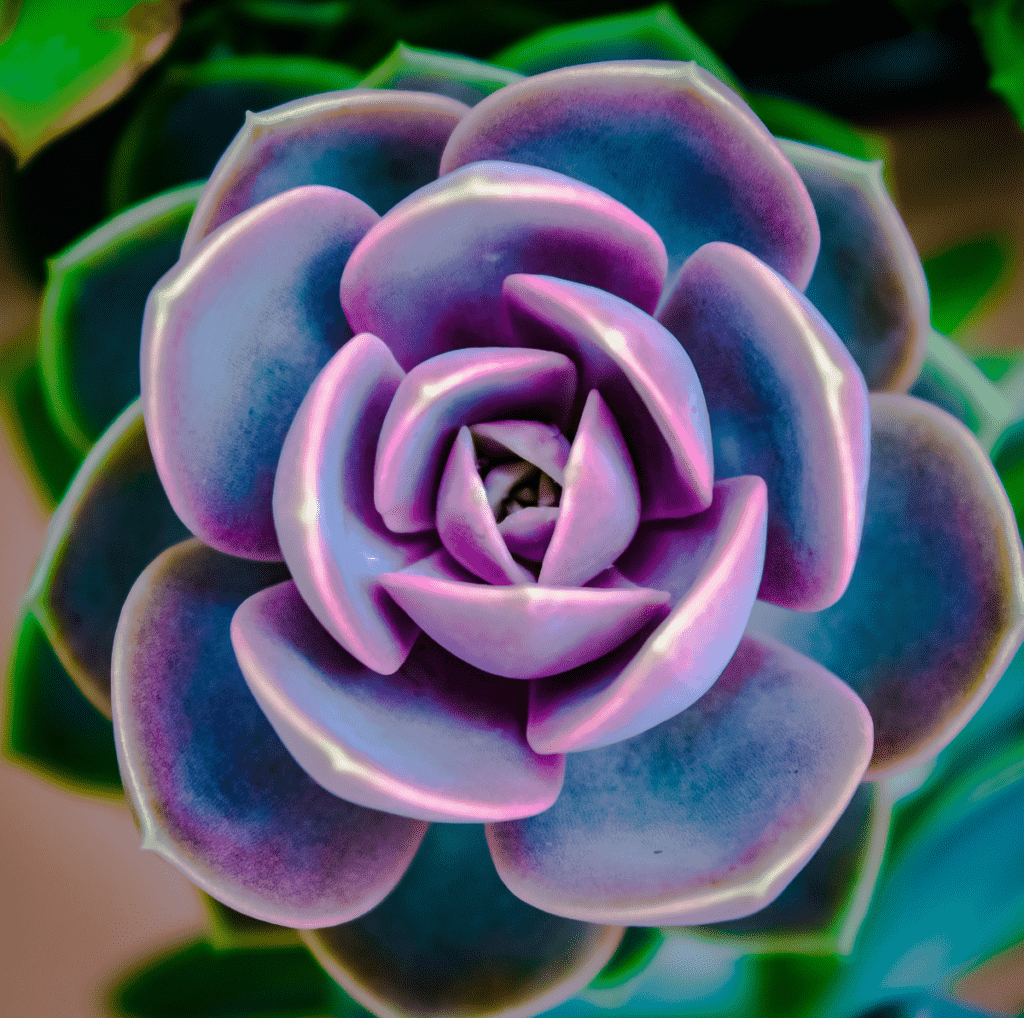
Originating as a hybrid succulent from Germany, this Echeveria variety is not only very beautiful, but also very hardy. What makes this succulent unique is its ability to withstand cold temperatures, even when it gets below freezing.
While the Perle von Nürnberg can handle the cold, it would much rather prefer the sunlight; frequent sun exposure will lead to a more vibrant hued succulent.
12. Tradescantia pallida / Purple Heart
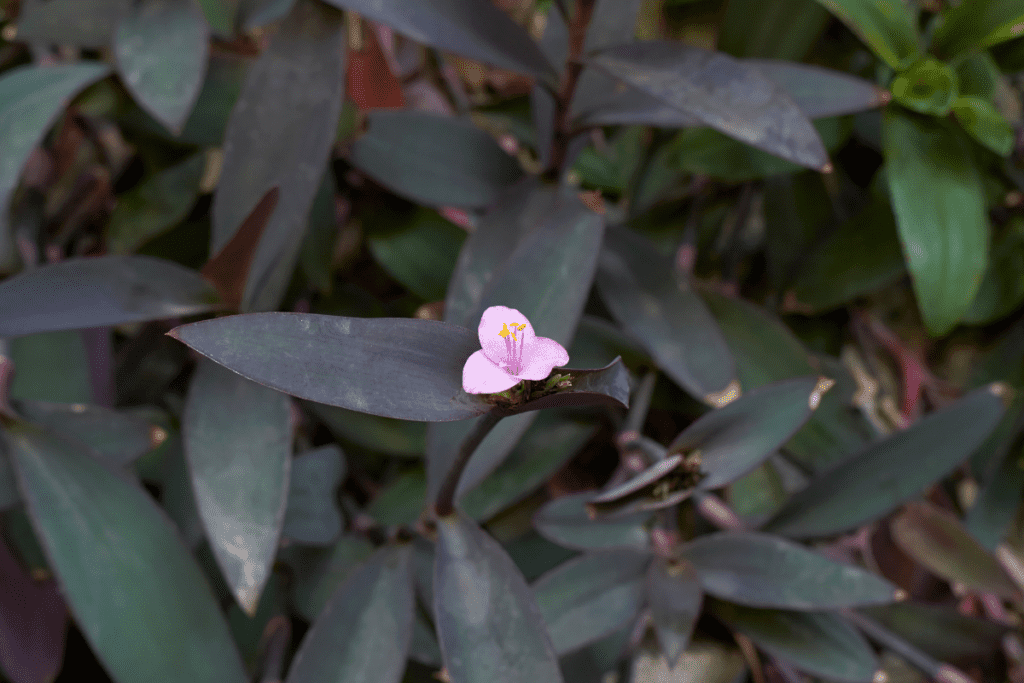
The purple heart is a wildly popular succulent plant that is often used as a ground cover for outdoor gardens. Make sure to give this plant bright sunlight to maintain that rich, purple hue.
This succulent is unique in that it grows long, trailing stems with purple leaves.
13. Aeonium Arboreum / Black Rose
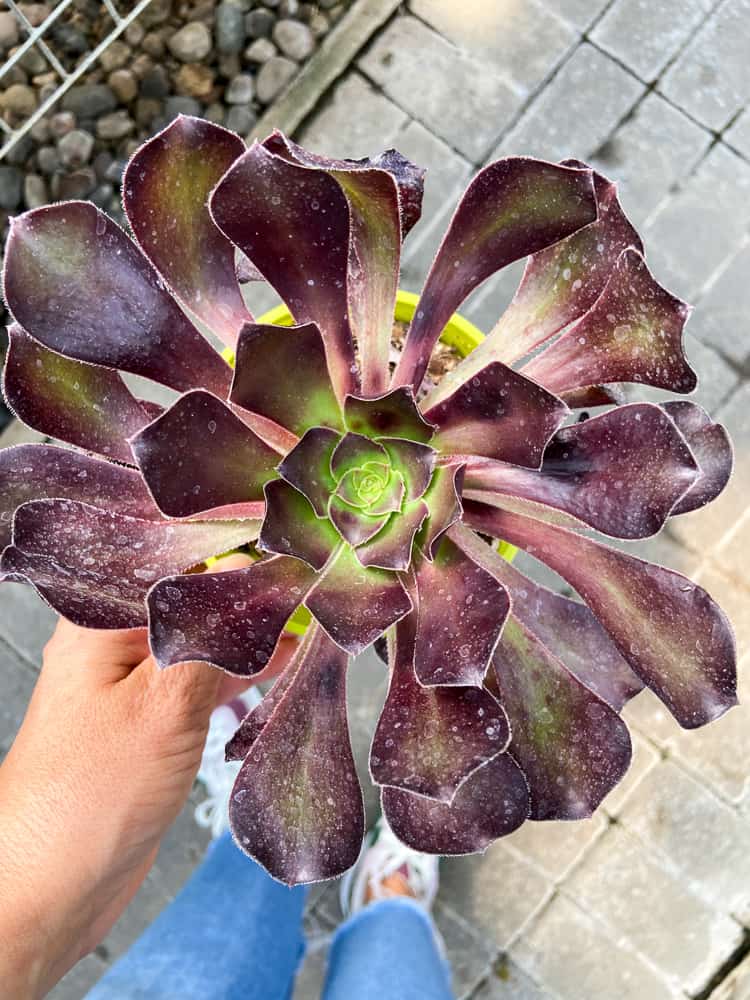
Another perfect addition if you’re looking to build a “goth garden.” The black rose gets its namesake from its dark eggplant-hued leaves which look nearly black.
Its leaves are rounded and give off the appearance of a flower. Their blackish-purple color is dependent on the sunlight, so many sure to give them bright light.
14. Aeonium ‘Velour’
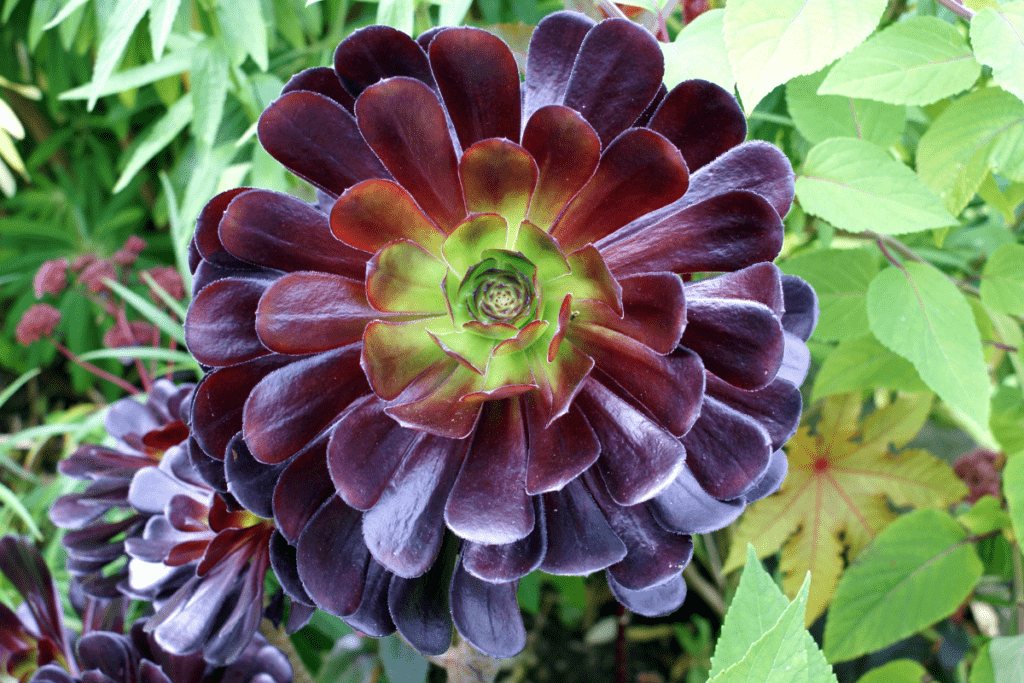
This aeonium variety starts off green in its youth, but eventually turns purple as it ages. This succulent is relatively tall and upright, reaching a height of around 3 feet tall.
Its paddle-shaped leaves grow in tight clusters. As the plant ages, the leaves turn a deep shade of reddish-purple.
15. Purple Aeonium Atropurpureum
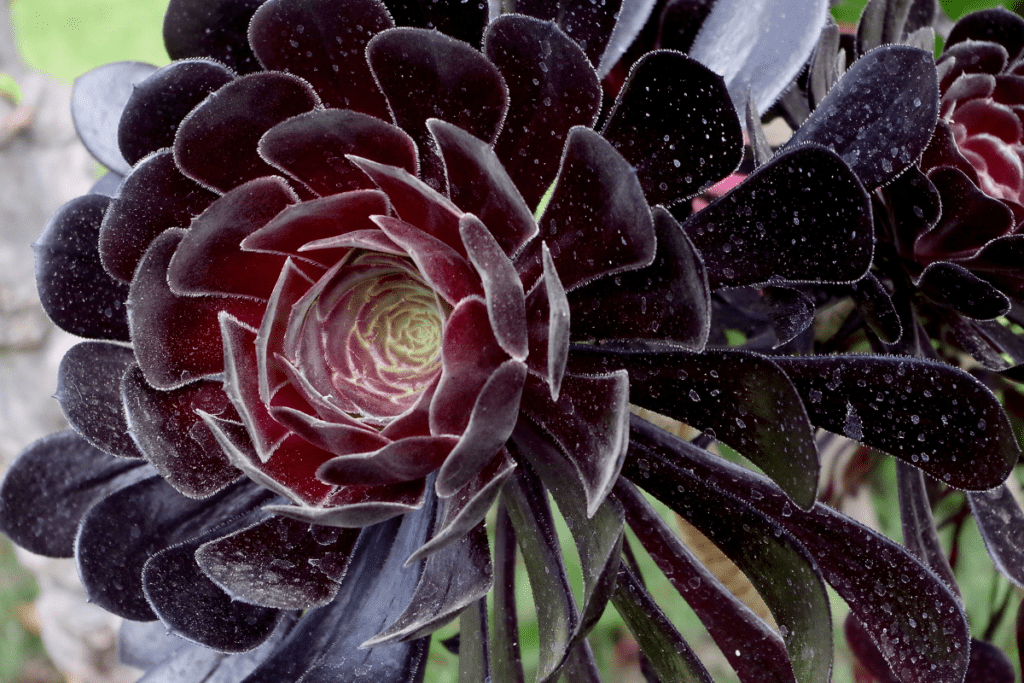
Very tall and very trippy- the purple aeonium atropurpureum is a mouthful to say out loud, but visually stunning! This succulent is an excellent choice for outdoor use and can be grown as a tree or as a shrub.
Native to North Africa, these succulents enjoy warm weather. Their purple hue is dependent on sun exposure, so make sure to plant them in full sun to get vibrant foliage.
16. Lithops Optica ‘Rubra’
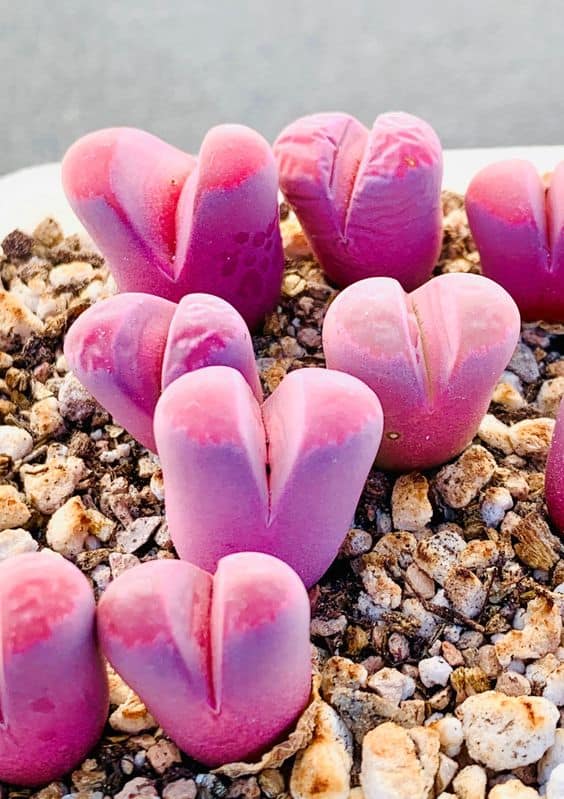
Image via Micro Landscape Design
Are those rocks? Nope; it’s the short, round leaves of the rubra succulent! This low-growing succulent grows vibrant pebble-shaped leaves that you just might mistake for funky-colored rocks upon first glance.
Native to southwest Africa, the rubra succulent enjoys full sun and well-draining, sandy soil.
17. Sedum Dasyphyllum ‘Lilac Mound’
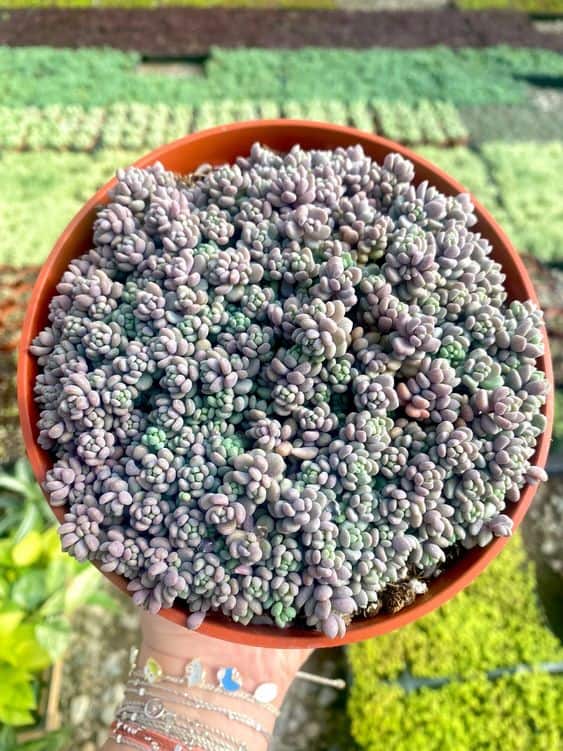
Image via Cristina’s Garden
The lilac mound is a perennial succulent is a popular choice as an outdoor ground cover. Native to Europe and North Africa, these succulents grow small clusters of fleshy leaves that range in a variety of colors from blue-green to lavender.
Expect plenty of butterflies when these succulents bloom!
18. Sedum ‘Purple Emperor’
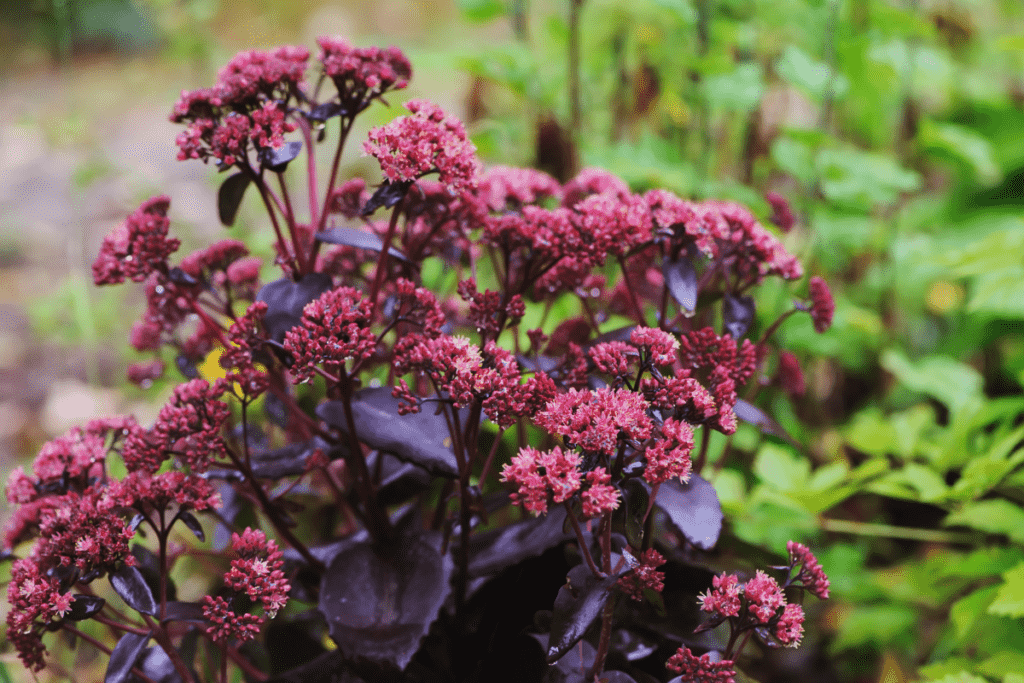
Another excellent choice for a ground cover, the purple emperor grows shrub-like leaves and bright pink flowers. Not only is this succulent gorgeous in a garden, but it attracts pollinator insects (such as bees), so your other plants will benefit from the purple emperor’s presence.
Plant this succulent in rocky, sandy potting mix and keep the soil evenly moist.
19. Graptopetalum ‘Superbum’
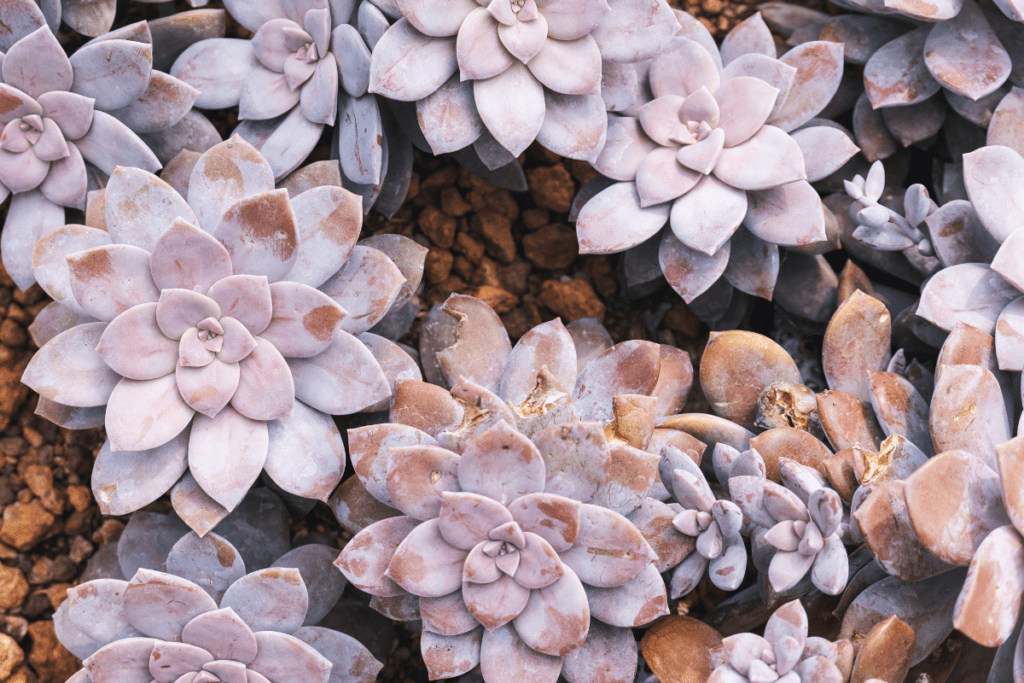
This succulent’s common name is “Beautiful Graptopetalum” and upon first sight, you’ll know exactly why! This small succulent grows long lavender leaves which cascade as the plant ages.
In early spring, you’ll be delighted in this succulent’s beautiful flowers, which are pale yellow with red tips.
20. Graptopetalum ‘Debbie’
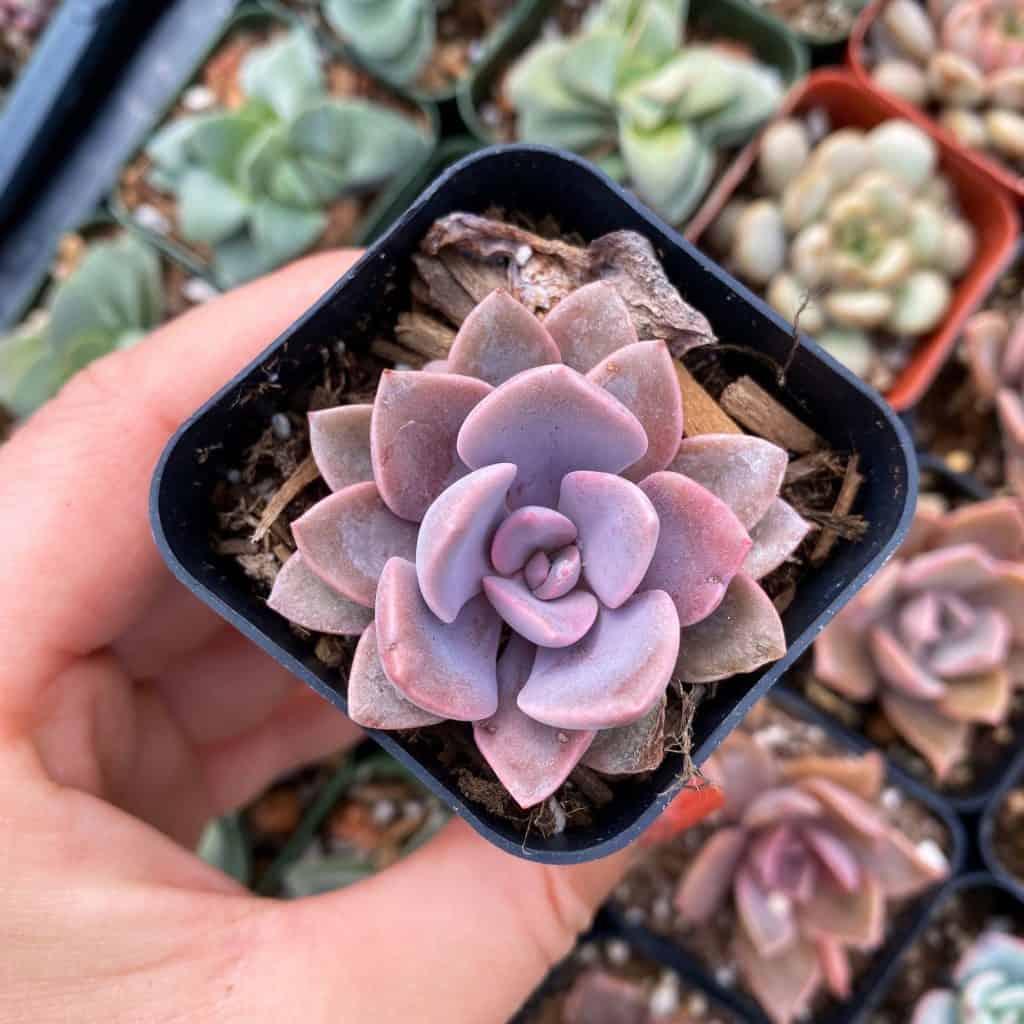
Image via Queen of Succulents
This South African succulent’s color is dependent on the temperature; cooler temperatures results in a deeper shade of purple. Its triangular shaped leaves form a spiral rosette patten and only reaches a diameter of 8 inches at full maturity.
In the springtime, the Debbie succulent produces apricot-colored flowers.
21. Sedeveria ‘Lilac Mist’
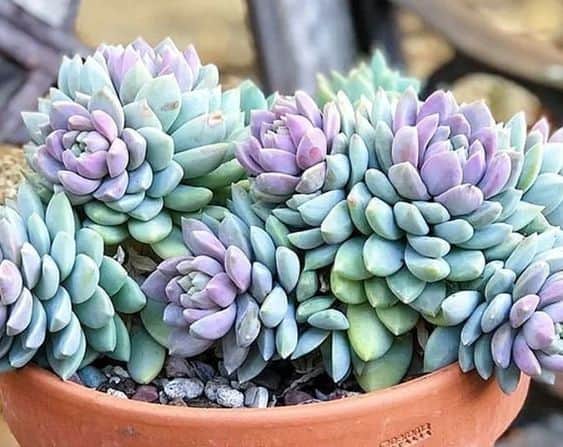
Image via My Succulent Corner
The lilac mist is a hybrid succulent named after its dusty gray-lilac color. This succulent forms a large rosette shape and grows thick, fleshy leaves.
Care for this succulent is no different than many other succulents.
22. Mangave ‘Mission to Mars’
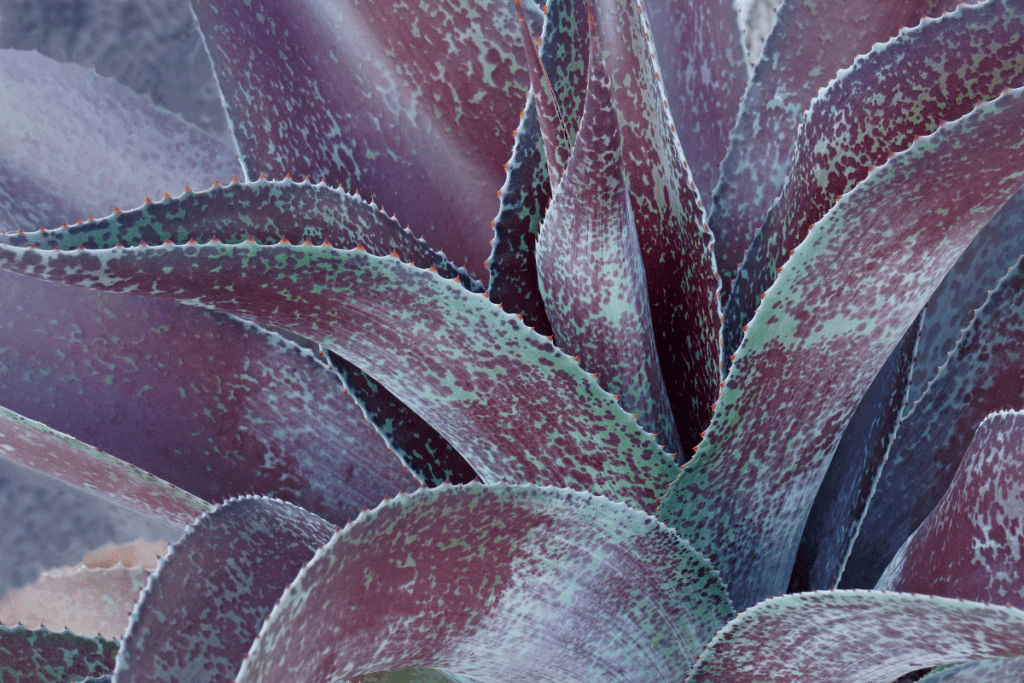
At first glance at the ‘mission to Mars’ succulent, you just might think it came from outer space! This interesting succulent produces long, spear-shaped leaves that slightly curve inward.
Care for these plants is no different than many other succulents; make sure to only water when its soil is entirely dry and provide it with direct sunlight.
23. Pachyphytum oviferum ‘Moonstones’
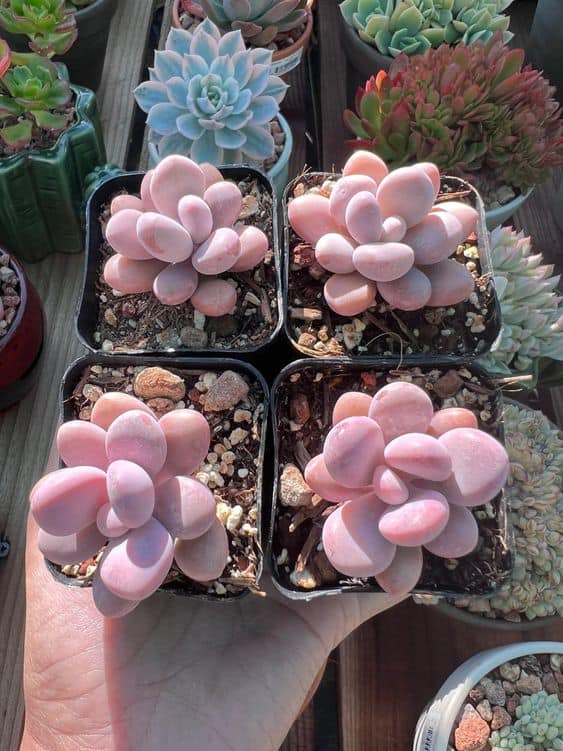
Imge via Succiesco
Native to Mexico, the moonstone succulent is sometimes also referred to as the “sugar almond plant” because of its smooth almond-shaped leaves. Its beautiful pinky-lilac leaves grow in a cluster formation.
This succulent is prone to mealybugs, which can easily be controlled by applying neem oil to the foliage.
24. Pleiospilos nelii ‘Royal Flush’
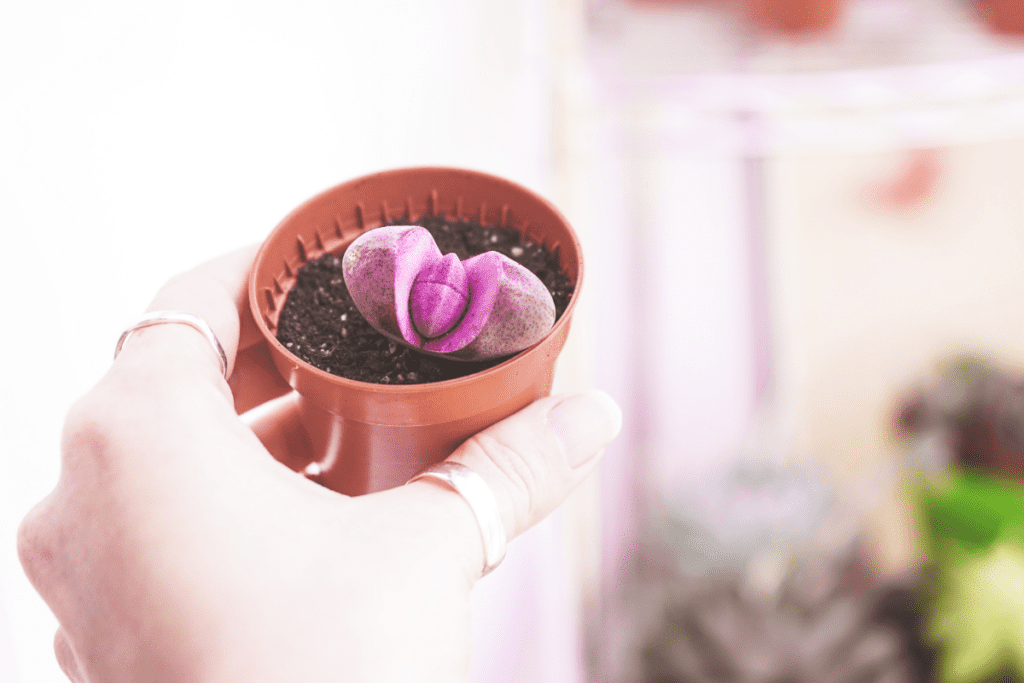
Hailing from South Africa, the royal flush succulent is a very odd succulent, which makes it a perfect addition to your garden decor. This tiny succulent only grows about two to four leaves that have deep grooves in the center.
They are reddish-purple in color, and are adorned with black spots all over them. At full maturity, the royal flush reaches a height of 3 inches tall. Unlike many other succulents, this variety enjoys regular humidity.
25. Anacampseros Rufescens
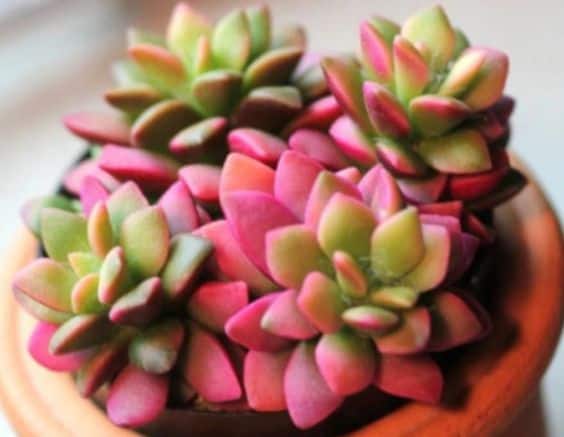
Image via Mirage of Eden
The anacamperos rufescens’ hardy disposition makes this succulent perfect for outdoor gardens. It is capable of withstanding many different outdoor conditions and is capable of withstanding relatively cold weather and colder temperatures compared to other succulents.
These plants can produce beautiful pink and purple flowers Don’t be discouraged if this succulent begins to grow green leaves; they’ll turn purple with age!
26. Senecio herreanus ‘Purple Flush’
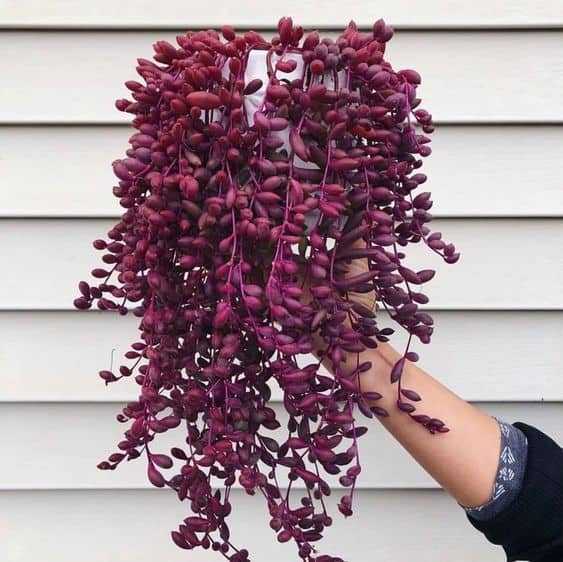
Image via Plants from Home
The purple flush succulent is unique in that the leaves are not purple- but the stems are. The purple flush succulent grows fluorescent purple stems that contrast sharply with its green oval-shaped leaves.
When this succulent blooms, it produces white flowers that oddly resemble a brush. Care for these plants as you would with a regular succulent; ample sunlight and infrequent watering is a must.
27. Senecio jacobsenii ‘Trailing Jade’
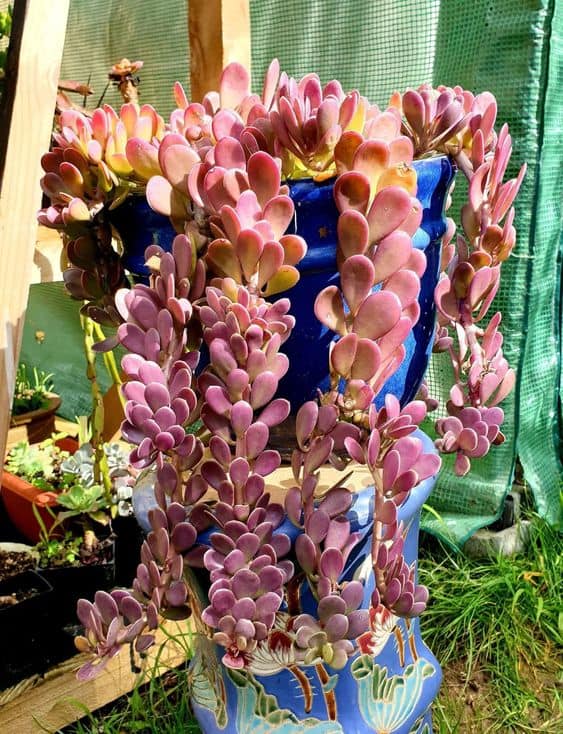
Image via Succulent Creationz (where you can purchase one)
Perfect for hanging baskets or ground cover, the trailing jade gets its name from its trailing growth pattern. This succulent is able to grow to a length of 12 feet long, and its stems are adorned with fleshy, vibrant purple leaves.
This plant blooms very infrequently, but be warned when it does bloom: their orange flowers are known to have an unpleasant odor.
28. Gymnocalycium ‘Purple Moon Cactus’
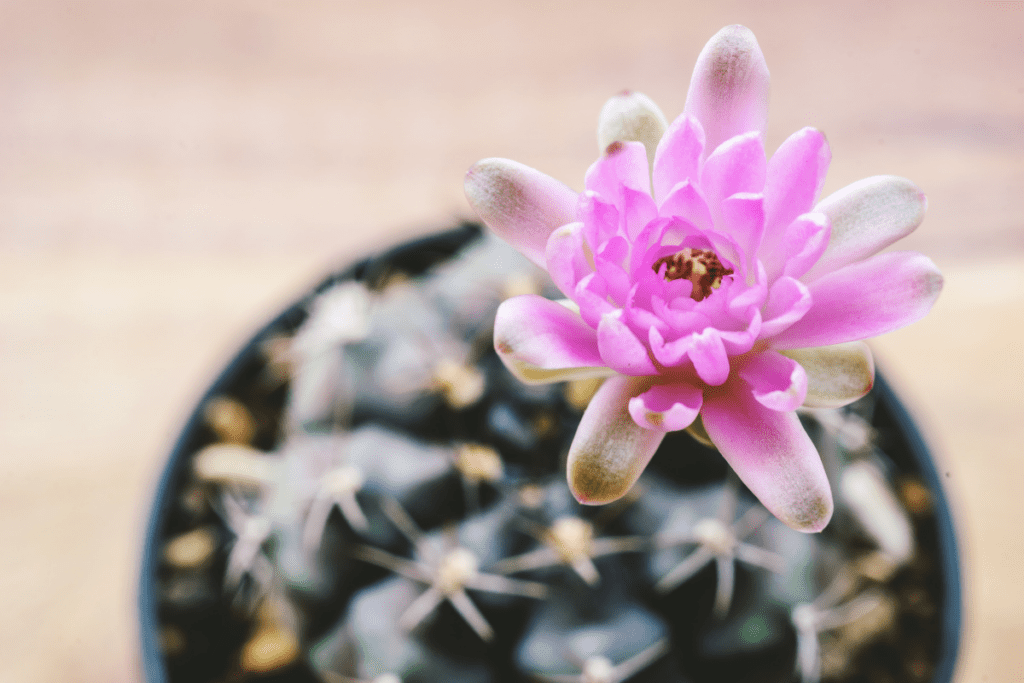
The purple moon cactus’ dull purple hue is due to a natural lack of chlorophyll in the plant. Originally native to South America, this tiny cactus is a perfect addition to your home decor and require little attention. In addition, these cacti produce vibrant flowers that are sure to delight.
29. Echinocereus pectinatus ‘Rainbow Hedgehog Cactus’
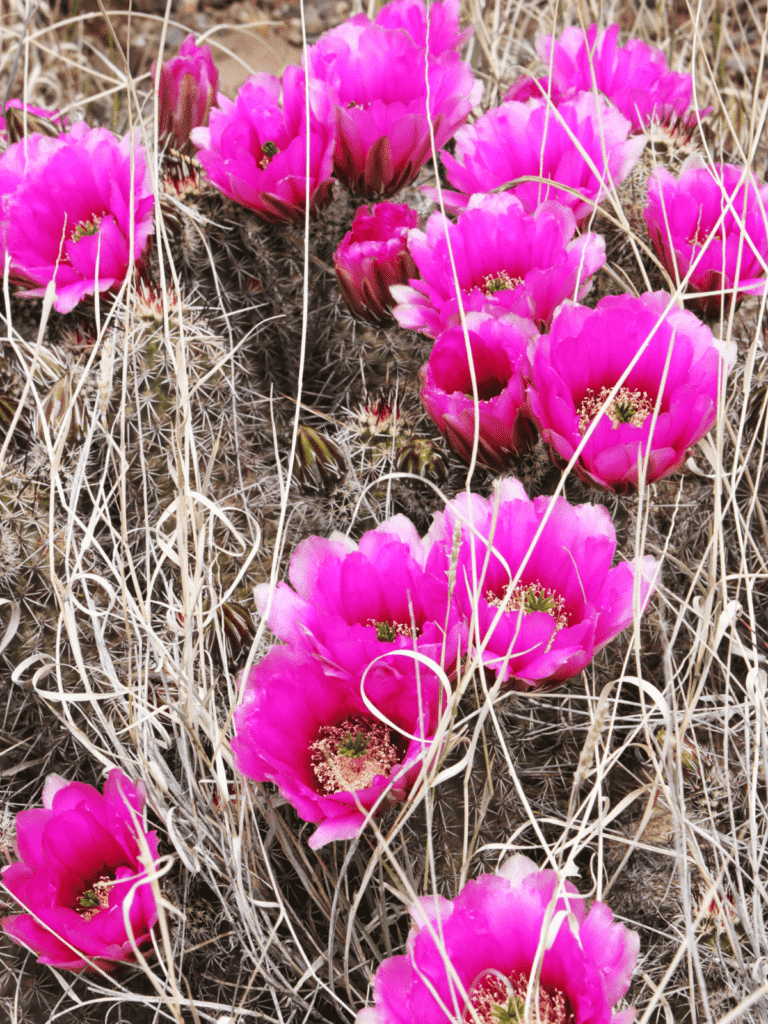
With an appearance as fun as its name, the rainbow hedgehog cactus will certainly be a conversation starter amongst your houseguests. The rainbow hedgehog can reach a height of 14 inches tall and spreads 5 inches wide.
This gorgeous succulent are identifiable by their flashy purple spines and vibrant pink and white flowers. This cactus has a weak root system, so infrequent watering is a necessity for the longevity of this plant.
30. Kalanchoe x houghtonii
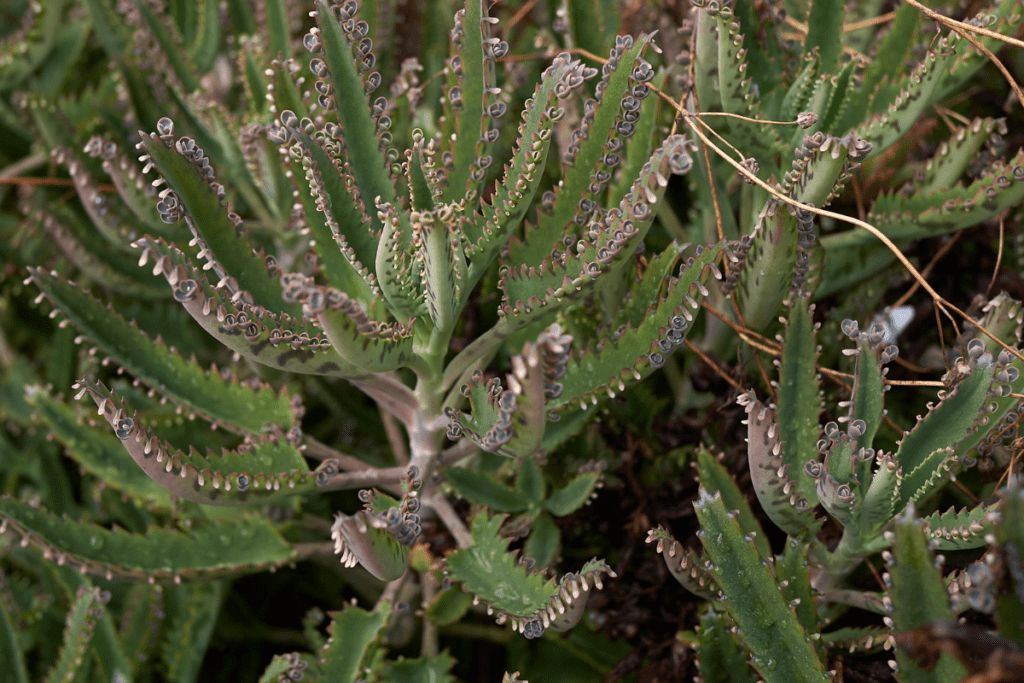
This hybrid succulent is about as avant-garde as it gets. Their spear-shaped leaves are adorned with smaller leaves that grow along the edges.
While the Kalanchoe x houghtonii is breathtakingly beautiful, all parts of this succulent are toxic, so it is best to keep this plant away from curious pets and children.
How Do You Take Care of Purple Succulents?
Generally speaking, most purple succulents require the same care routine as many other members of the succulent group. Succulents are often native to warm, dry climates; it is up to the gardener to do their best to maintain that same environment for them.
Using a well-draining slightly acidic soil tailored towards succulents helps them retain the droughty conditions they adore. In addition, most succulents require very minimal watering, only requiring water when their soil has entirely dried up.
Sunlight is also an important aspect of caring for succulents. As you may have noticed in this list, many of these succulents’ purple hue is dependent on an abundance of sunlight.
Unless otherwise specified, you can be rest assured that succulents enjoy warm, droughty conditions. However, if you’re ever concerned, it is always recommended to do further research to make sure you are keeping your succulents happy and comfortable for years to come!
Want a more succulent plant fun? Check out these 21 pink succulent plants, this collection of flowering succulents or these incredibly rare succulent plants!

